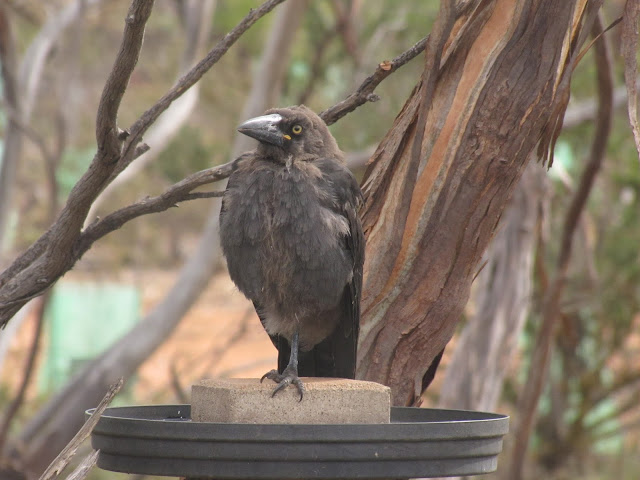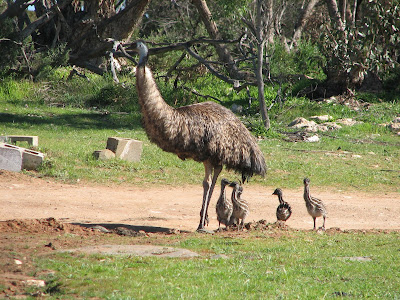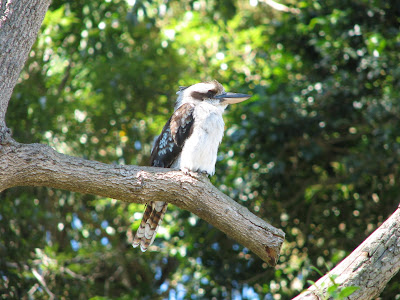 |
| Laughing Kookaburra Lane Cove National Park Sydney |
Earlier this week I wrote about one of our visits to Sydney earlier this year. During one of our breaks from looking after our grandchildren, ages 8 and 5, we drove across town to the Lane Cove National Park. This lovely park is only a quick ten-minute drive from my son's home. The main feature of this park is the Lane Cove River flowing through it. Houses and commercial areas crowd in on the park on all sides, but the remnant bushland still maintains a good variety of native Australian plants, birds and other wildlife such as reptiles, insects, and turtles. Delightful picnic areas have been provided by the park's staff.
Speaking of turtles, on this particular visit we set up our folding chairs, opened up our picnic lunch boxes and were about to eat lunch. My attention was drawn to several Long-necked Turtles sitting on a log near the water's edge. I handed my binoculars to my wife so that she could have a closer look at them sunning themselves on the log.
 |
| Long-necked Turtles on a log, Lane Cove River |
As soon as she had taken the binoculars, a Laughing Kookaburra swooped out of a nearby gum tree. It flew down to her chair and snatched a part of her sandwich sitting on the table on the side of her chair. It flew off a few metres with its booty, settling on the grass nearby to eat my wife's lunch (see photos). It was immediately joined by another kookaburra who claimed its share of the food.
In an ironic twist to this tale, we saw plaques attached to all of the picnic tables in this park. The rangers had placed these notices for all visitors to read. "Please do not feed the birds and animals," they said - or words to that effect. perhaps they should add a notice for the wildlife: "Please do not snatch human food."
For more stories about and photos of Australian birds, visit my other site Trevor's Birding.
 |
| Laughing Kookaburra Lane Cove National Park Sydney |














































